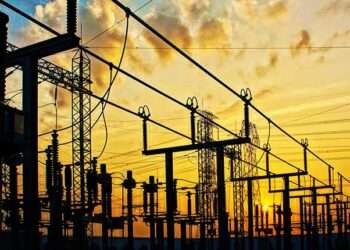The Energy Commission’s National Energy Statistics report has revealed that, Ghana’s electricity export in 2019 reached the highest level in two decades. This was after the Commission found out that, the country exported 1,430 Gigawatt hours (GWh), which represents 7.9 percent of total electricity generation exported largely to neighbouring countries.
On the other hand, the country recorded the lowest import of electricity in 2019 as it fell to 127 GWh, equivalent to 0.7 percent of total generation. This also represents the lowest level of the importation of power since 2014.
As a result of the increase in the export of electricity, the net electricity export – subtracting import from export yielded 1,227 GWh in 2019. This is double the net export figure of 600 GWh in 2018.
At the beginning of this century, Ghana was a net importer of electricity. The country was importing 864 GWh representing 13.7 percent of the total generation, whereas 392 GWh which made up 5.9 percent of the total generation was exported.
The Energy Commission attributes the country’s sharp increased net electricity export partly as a result of the soar in installed electricity generation capacity. Ghana’s electricity generation capacity increased from 1,652 Megawatts (MW) in 2000 to 5,172 MW in 2019, representing an annual average growth rate of 6.2 percent. As the increase in capacity occurred, the dependable capacity also increased from 1,358 MW to 4,695 MW.
Specifically, the period between 2012 and 2019 witnessed a surge in the expansion of installed capacity, from 2,280 MW to 5,172 MW.
Because of this, the country has excess capacity. As such, when the country witnessed a peak in demand in 2019, it was realised that the peak was significantly below the installed capacity- 2,804 MW, which made up both domestic and export demand.
It’s not all rosy. In a separate report dubbed, The 2020 Energy Outlook, the Energy Commission cautioned the state that, if urgent measures are not taken to address the chronic debt in the power sector, overall sector liabilities could hit US$12.5bn by the end of 2023.
According to the report, the sector debt is due to several issues which include; short-term loans contracted by the power producers, take-or-pay power purchase agreements, and the distribution utilities’ inability to collect adequate revenue to cover their operations.
Take-or-pay power purchase contracts are common in the energy industry and they compel the off-taker (government, in this case) to pay for power supplied by the producer irrespective of available demand.
As take or pay contracts obligate the state to finance the production of power regardless of it being utilized, the Ghanaian government has paid for this power through loans in the last two years. This has worsened the country’s debt problems.
Consequently, government has been trying to renegotiate these contracts with the independent power producers (IPPs) so that they can be restructured to reduce the obvious waste in the system.
According to the 2020 Energy Outlook report, the Energy Sector Recovery Programme (ESRP) has highlighted numerous paths and actions that the government must take to improve the financial health of the energy sector.
The ESRP is made up of immediate, near-term, and medium-term actions needed to achieve government’s aim to bring the sector into balance by the end of 2023.





















